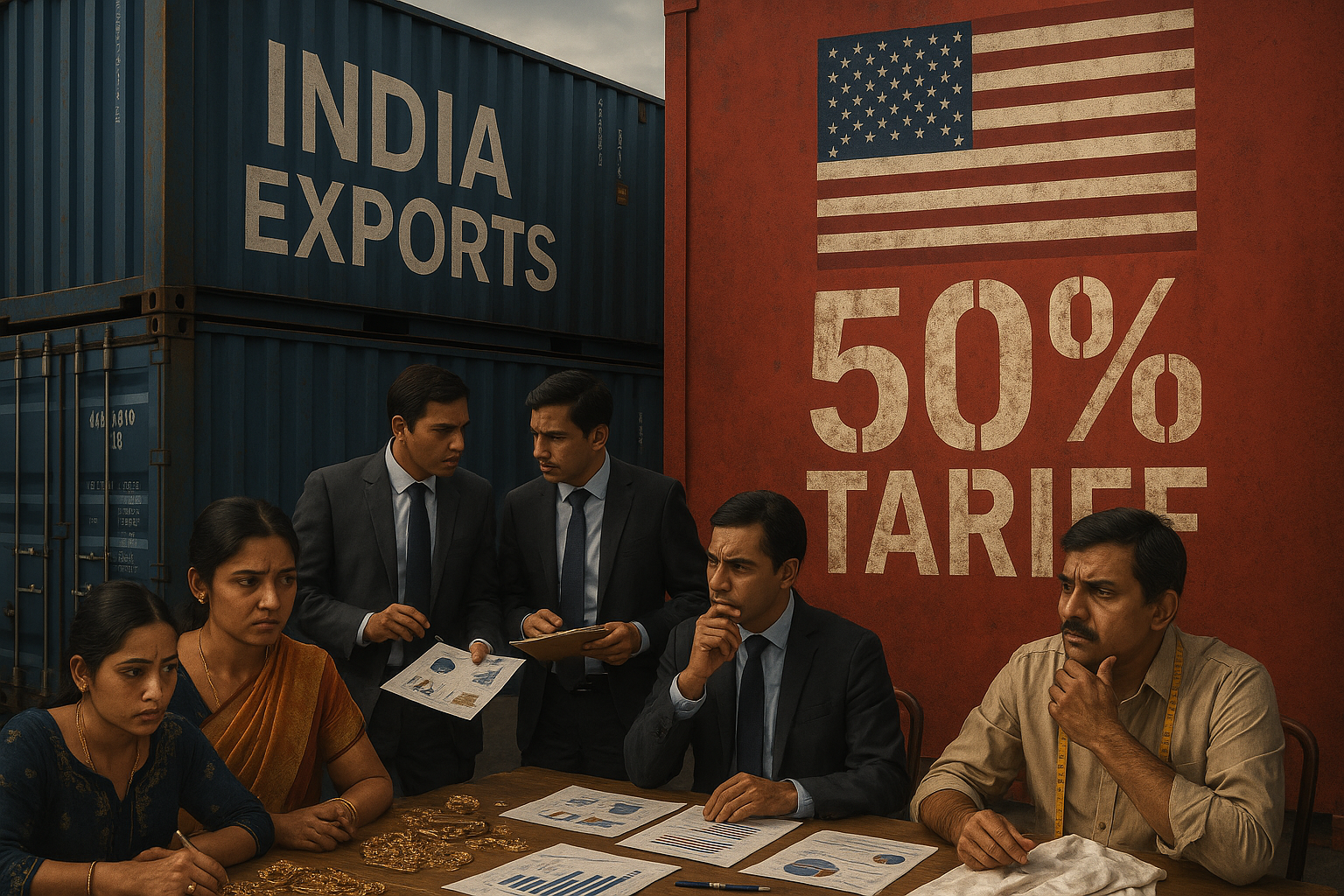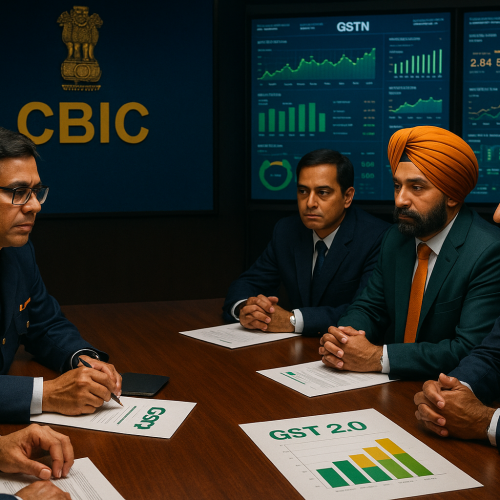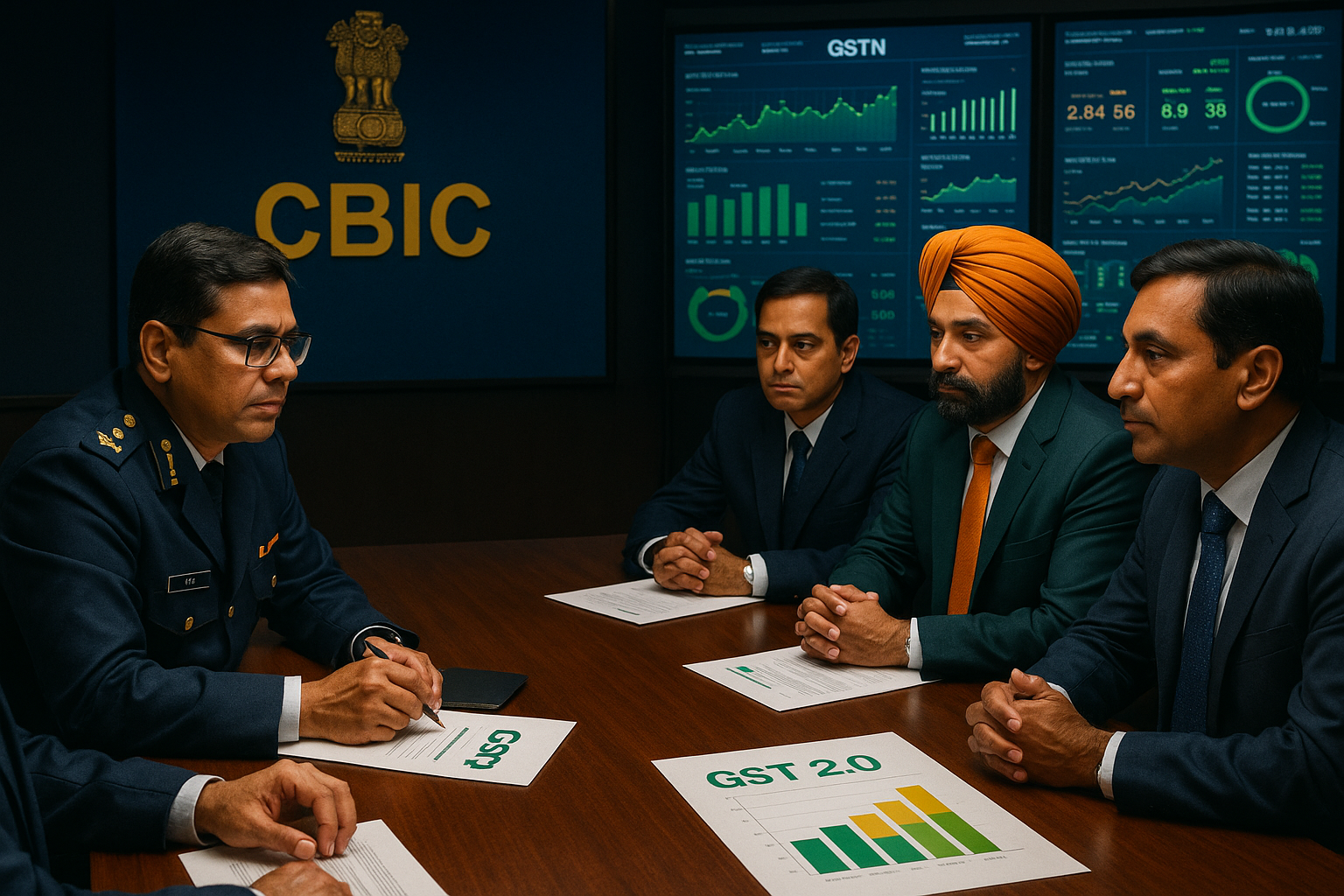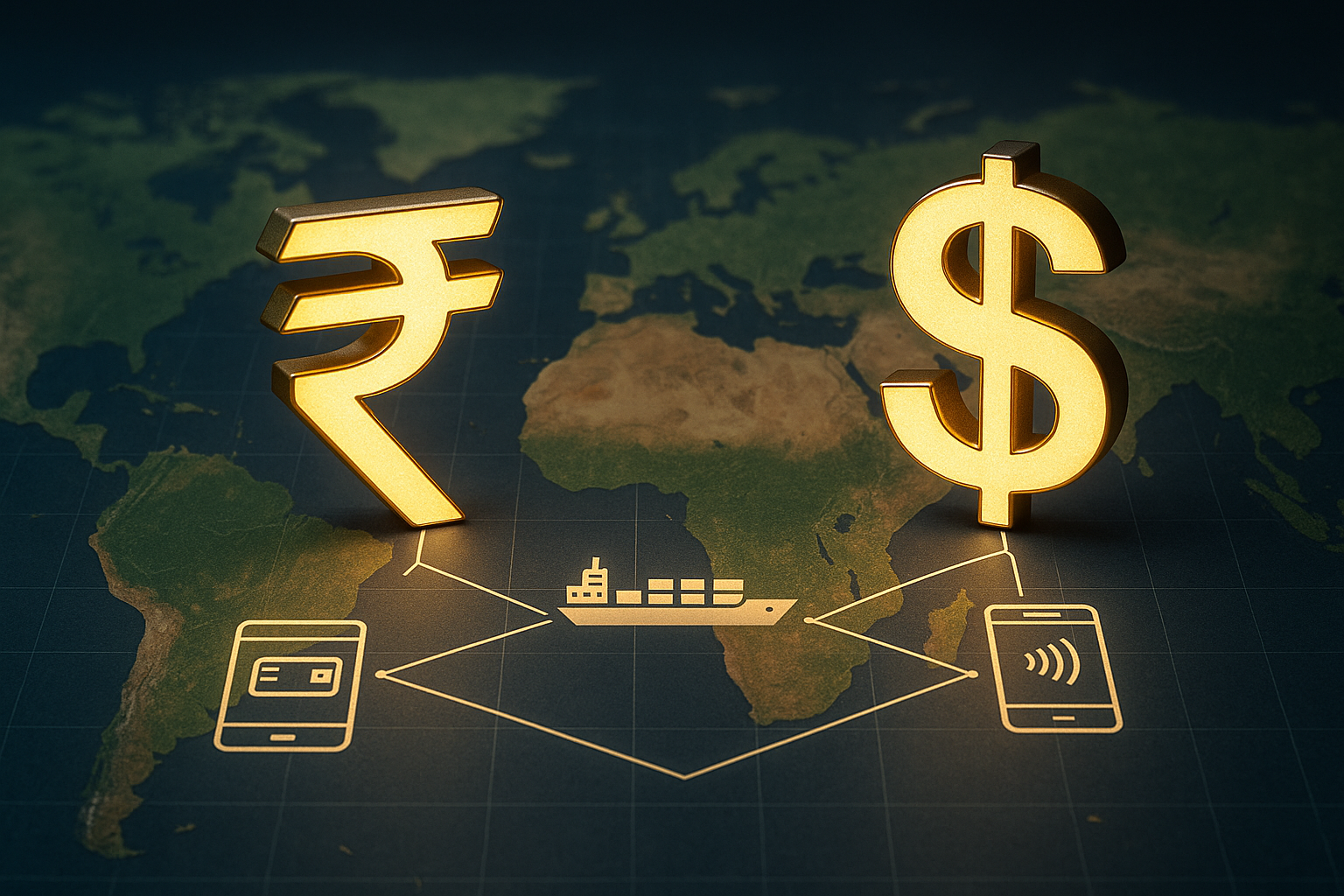The U.S. under President Donald Trump has imposed a steep 50% tariff on Indian exports, delivering one of the toughest trade blows New Delhi has faced in recent years. The move threatens India’s export competitiveness, particularly in labour-intensive sectors such as textiles, gems & jewellery, and leather, and raises urgent questions about the future of India-U.S. trade relations.
For Prime Minister Narendra Modi’s government, the tariff shock presents a critical test of strategy—whether to pursue aggressive negotiations, diversify export markets, or accelerate domestic reforms to shield the economy.
The Tariff Impact
The U.S. is India’s largest export destination, accounting for nearly 20% of India’s total exports and over 2% of GDP. The 50% tariff is set to hurt price-sensitive industries already facing global demand pressures.
Textiles and apparel exporters could lose competitiveness against rivals like Bangladesh and Vietnam.
Gems, jewellery, and leather sectors risk declining orders as U.S. buyers turn to alternative suppliers.
The impact goes beyond economics, straining one of India’s most important bilateral trade relationships.
New Delhi’s Policy Dilemma
The Modi government faces a delicate balancing act. On one hand, it must protect domestic industries and jobs from tariff shocks. On the other, it cannot risk a full-blown trade confrontation with Washington.
Options on the table include:
Engaging in calibrated negotiations with the U.S. to seek exemptions or phased tariff relief.
Expanding market access in Europe, Africa, and Southeast Asia to reduce overdependence on U.S. trade.
Using the crisis to accelerate tax and red-tape reforms, making Indian exports more competitive.
Broader Economic Implications
The tariff shock comes at a time when India is pushing for stronger global integration through trade reforms and FTA negotiations. Higher barriers from the U.S. could dampen investor sentiment, weaken India’s China+1 supply chain positioning, and raise inflationary pressures if export-oriented firms cut jobs or pass on costs.
However, experts suggest that if India uses this crisis as a springboard for structural reforms, it could emerge stronger in the long run.
Why This Matters
For Exporters: Immediate loss of competitiveness in key sectors.
For Policymakers: A test of India’s ability to balance diplomacy with domestic protection.
For Citizens: Risks to jobs and incomes in labour-intensive industries.
The tariff crisis is both a challenge and an opportunity: while it poses a short-term blow, it could accelerate India’s long-term shift toward diversification, resilience, and reform.












